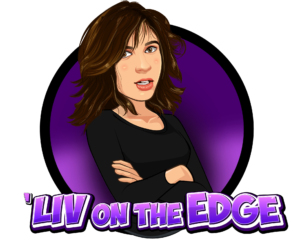We studied in the Las Positas library, separately. He wore plaid pajama bottoms, in blue I think, with a grey hoodie. Making my black slacks and black-and-white-striped knitted sweater feel overdressed. He talked to a friend about his classes, at a volume not conducive to a library. Epitomizing computer science majors everywhere.
His friend was quieter. He had a look buried in his face. The one worn by the kid in class who wants the kid next to him to shut up before they both get in trouble.
I felt pajama-bottoms’ watch. On at least one occasion when I looked up at him, our eyes made contact. Mutual curiosity.
 I’d been sitting at one of the chairs by the library’s front windows. I was alone. He and his friend were adjacently positioned on a couch. Packing my bag, I could sense him shuffling around. Getting ready to do something. Getting up.
I’d been sitting at one of the chairs by the library’s front windows. I was alone. He and his friend were adjacently positioned on a couch. Packing my bag, I could sense him shuffling around. Getting ready to do something. Getting up.
I forget who did first, who started walking in the direction of the other. But he stopped me.
“You’re pretty cute,” said the tan, curly-topped, lanky, pajama-donning young man.
Flattered and insulted. Both conflicting emotions were soon enough overwhelmed by trepidation.
A stranger was speaking to me. Live. In person. No time to do a quick stalk of his social media. No option to go on mute and turn my camera off to practice a response.
It was a second — two max — after his lukewarm assessment of my attractiveness. But the way I froze, the immediate confusion over what to do next, made it feel like 60. Paralyzed by the simultaneity of hope and fear. Hope the words would vomit out soon. Fear they’d come out too fast, wrong.
Before they did he asked for my number. I gave it to him.
Not sure why — perhaps because doing so felt more like being alive than anything else in that moment did.
It felt more like being alive than pretending to read an old-smelling book, listening to the two guys talk instead. It felt more alive than that awkward teenage nervousness that should’ve dissipated by 19. The spotlight effect of adolescent self-absorption. The thinking that anyone in your vicinity cares about your activity as much as you, or at all.
It’s like miming life. When you live like you’re under constant perception — because of false, adolescent spotlights, or surveillance, or the performative selling of ourselves through social media — it’s not living, really. It’s an imitation.
So you reach for whatever’s closest to the real thing. You go for the shitty pickup line. Even more of an indictment: it works.
“We know that during the teen years, girls use their social network a lot to help deal with emotions and stressors,” Neva Corrigan, lead researcher on a University of Washington study, told the Seattle Times in September. “During COVID, they lost that emotional support avenue, and males may not use that as much.”
Something paused during Covid, during the pandemic’s peak. It happened in the brain. Like, young people grew without growing.
Our bodies changed: we got taller, our posture straightened or curved, some of us went to the gym, some didn’t. But our minds stayed there, in 2020. Alone in a room. Behind a computer. Waiting for life to restart.
The psychosocial development of young people typically requires getting out — out of our rooms, out of ourselves, out of our minds. It involves experiencing. Class in person. Parties. Dungeons and Dragons game nights. Bible study. And fucking up. Over and over and over. Then learning and doing better. It involves meeting people all the time. Even ones you don’t like, don’t agree with, and learning how to effectively interact with them. To communicate. To exist.
That’s what our mental development needed. Instead, it got a room and a computer. It got social media. It got a math class on Zoom. It got distracted. It got conditioned to avoid. And it stayed where it was, because there was nothing really to feed it. So the mind ate itself. Or it ate and was pacified by algorithms. Or it got so lost in its interior that entering the outside world became herculean.
COVID didn’t create the problems: the social media and entertainment addictions, the anxiety, the atomization of identity. America, through capitalism and history and politics and culture industries and feeds, tells us consumption and individualism rule. COVID just reinforced its messaging. A canonizing event.
The mental illness, the exaggerated sense of being perceived. It didn’t start in 2020. But the psychosocial separation – the hyper-individualized algorithmic silos — turned physical. We were alone. So we escaped. We went to the only place we could. Inside ourselves. Inside our feeds.
So when the pandemic ended, it felt like it hadn’t. Because we’d gone in so deep.
It’s not so bad, though. Right? We didn’t experience an apocalyptic event. We’re not hopelessly transformed. We’ll live. It’s more of a little t trauma.
Maybe, as a 2022 Stanford study declared, the pandemic physically aged teenagers’ brains. MRI scans from 163 children taken before and during the pandemic showed a sped-up development in adolescents who endured the lockdowns. Their brains were older than them, an acceleration that typically only appears in children who have experienced significant adversity such as violence and a dysfunctional family, and it’s been linked to poor mental health later in life, according to an article on Stanford Report.
Fourth graders in the pandemic are graduating middle school this year. Eighth graders during the pandemic are preparing to enter college this year. Sixteen-year-olds in the pandemic are turning 21 this year. Some may have a reverse-Benjamin Button brain because of quarantine trauma.
In May of 2023, the U.S. Surgeon General called loneliness an epidemic. In October the following year, Harvard’s Graduate School of Education reported that 21% of Americans felt lonely. Of the “lonely respondents,” 65% felt “fundamentally disconnected from others or the world.” A little under three-quarters of respondents said technology was a primary contributor to the feeling.
Last year in January, the American Psychiatry Association found in polling that young people aged 18-34 were more likely to be affected by loneliness. Thirty percent of them said they felt lonely several times a week, or every day.
Something can be done. Adjustments made. Accommodations enacted in deference to the unique realities of our COVID brains. Solving this social dilemma warrants intentionally developing avenues of cultural betterment — things that feel good to the soul.
Let’s revive the traditions of dance halls, jazz clubs and honky tonks. Everywhere. At least one of each in every census-designated area. And the house parties of the 1960s to 90s, bring those back, too. So we’re more regularly confronted with in-person, pleasure-enabling community. With dancing.
Let’s delete our social media. And delivery apps. If we need anything, like Maslow’s need for belongingness, let’s force ourselves to live to get it — to do it physically. Face to face.
We should bring an instrument to work. Make music on the job, and the walk to and from the car or bus. Make music where people are present. And where they’re not.
And listen to the radio. Let’s do that. AM and FM, sports and NPR. Anything that’s on: Christian Rock, Pop, Jazz. Anything to get away from pre-determined, algorithmic playlists that insulate our tastes.
Let’s enlist travelling journalists, reporting vagabonds — nationally. Who’d gather the town and city folk and share news via shout or song. We don’t trust the establishment, anyway. Right? We prefer our reporters independent, if we prefer them at all. Why not have them independently singing our news to us from hilltops?
On that note, let’s bring back medicine shows. Why let your grandpa buy phony Viagra as seen on TV? Why not let him see a real show as the ad’s accompaniment? Something that’ll get him out of the house, out from behind the tube. It’s the least he deserves!
Let’s put greasy food stands at the parks and corners of all suburban neighborhoods. Burgers, tacos, the food of whatever ethnicities occupy the area. And keep them there, the food stands, permanently. It’ll get the solo walkers talking.
Benders are good too. They say it’s bad for the mind and body, and they’re right, but it’s good for the soul. It should be noted: only so many neighbors can be on one at a time. The ratio of drunk to sober people within a five-mile radius must be such that a drunk might, in their house, play music so loud a sober guy next door is forced to make an introduction at 10:38 pm. Lifelong friendships abound.
Speaking of which, let’s make it a point to know our neighbors. Deliver dinner to the elderly. Learn the names of at least five families living near you. Host bi-monthly block parties. Invite everyone.
And let’s, where appropriate and applicable, use — or fall for — a shitty pickup line. Extra points for doing it in a library.
***
Top Illustration: A generation of children who endured the pandemic are still feeling the impact of COVID. (Illustration by Aaliyah Gholamipour / Special to The Express)
Olivia Fitts is the News Editor and Features Editor for The Express. Follow her on X, formerly Twitter @OLIVIAFITTS2.


